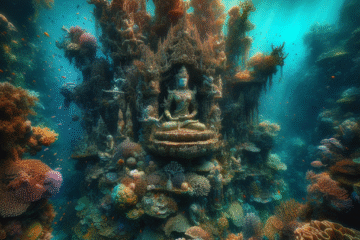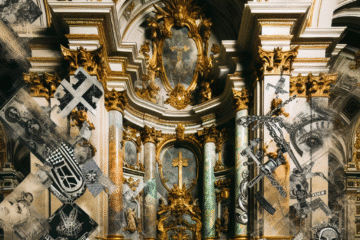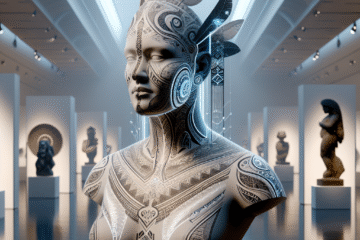
Image title: The Adoration of the Magi
Medium: Distemper on canvas
Date: 1472–74
Source:
The Met Collection
“
All children are artists. The problem is how to remain an artist once he grows up.
”
— Pablo Picasso
Postcards from the Apocalypse: Visual Artists React to Climate Crisis
Introduction: A World on Fire and Canvas
We live in a time where climate change is no longer a distant warning—it’s a present and accelerating force reshaping every corner of the globe. Artists, as chroniclers of the human condition, have long responded to periods of upheaval with works that both reflect and resist. In today’s context of ecological collapse, a new wave of visual art is emerging—urgent, searing, and unflinchingly direct. These are the postcards from the apocalypse, sent by artists who confront environmental catastrophe through their work, inviting us to witness, grieve, and perhaps act.
1. The Roots: Environmental Conscience in 20th Century Art
Long before climate change became a household term, 20th-century artists began laying the groundwork for ecological awareness in art. The Land Art movement of the 1960s and 70s, led by figures like Robert Smithson and Nancy Holt, sought to transform natural landscapes into monumental installations. Smithson’s “Spiral Jetty” (1970), hewn into the Great Salt Lake, not only engaged directly with the earth but also raised questions about entropy and permanence in the natural world.
At the same time, conceptual artists such as Agnes Denes pushed the envelope with projects like “Wheatfield – A Confrontation” (1982), where she planted a golden wheatfield on a landfill in downtown Manhattan. These works weren’t just sculptures—they were philosophical commentaries on nature’s place in a rapidly industrializing, commodified world. In retrospect, these early interventions feel prophetic, prefiguring today’s climate emergencies with surreal precision.
2. The Anthropocene Aesthetic: Art in the Era of Geological Change
The 21st century has introduced a new lexicon to art: Anthropocene, extinction, feedback loop. As scientists declared this epoch as geologically defined by human impact, artists responded by internalizing these themes. Olafur Eliasson’s installations, like “Ice Watch” (2014), which brought melting icebergs to urban plazas, merge spectacle with science. His work doesn’t just replicate nature—it relocates it, forcing urban viewers into direct confrontation with vanishing ecosystems.
Meanwhile, filmmakers and visual artists like John Akomfrah blend archival footage with meditative imagery to narrate environmental transformation through postcolonial and diasporic lenses. In his film installation “Purple” (2017), Akomfrah captures the psychological toll of ecological and social collapse, composing a visual symphony on ruin and memory. These works speak a visual language of fragmentation, submersion, and decay—painting the Anthropocene not as abstraction, but as intimate experience.
3. Beyond Shock: Eco-Activism and Contemporary Art Practice
For many contemporary artists, simply portraying devastation is not enough; art must act. Groups like Liberate Tate and Culture Declares Emergency use performance, installation, and protest to challenge fossil fuel sponsorship within art institutions. These interventions refract a deeper philosophical question: Can art truly be ethical if it remains complicit with the systems it critiques?
Artists like Mel Chin push this even further. His project “Revival Field” (begun in 1991 and ongoing) harnesses living plants to extract heavy metals from toxic soil—a poignant merger of science, ecology, and sculpture. Likewise, the emerging genre of bio-art, where living organisms are used as media, brings art into direct engagement with biology and regeneration, breaking down boundaries between art, science, and activism.
4. Digital Futures: Climate Art in the Age of Technology
As our world becomes increasingly digitized, so too do the tools artists use to comment on climate catastrophe. Virtual reality, data visualization, and even machine learning are now integral to several artworks tackling ecological themes. Australian collective The Climate Clock, for instance, creates real-time countdown installations showing how much time remains before catastrophic tipping points are reached. Their monumental, viral clocks offer a brutal new way of keeping time—measuring our urgency, not temporality.
In the AI-driven project “Mismatch Bodies” by Refik Anadol, climate data is transformed into monumental generative visuals, making abstraction palpable and mesmerizing. These works embody a shift toward immersive aesthetics—drawing viewers into environments rather than displaying them. By leveraging new technology, artists make the invisible visible: carbon emissions, rising temperatures, vanishing species—all gain ghostly, cinematic presence.
5. Haunting Horizons: Beauty, Grief, and Hope
Despite the apocalyptic themes, much of today’s ecological art is not nihilistic. Rather, it is infused with a strange, haunting kind of beauty—what philosopher Glenn Albrecht terms “solastalgia,” a melancholic longing for a disappearing environment. Artists like Zaria Forman, who paints hyperreal pastel works of melting icebergs and rising seas, capture this sentiment exquisitely. Her work balances between visual seduction and ecological anxiety, compelling us to care precisely because we are moved.
This blend of reaction and reflection drives the current transformation of visual art into a field of ecological consciousness. Whether by deploying raw materials, participatory spaces, or boundary-crossing technology, these artists send us urgent dispatches from a shifting planet. In their hands, art becomes more than mirror—it becomes message, warning, and possibly, a path toward renewed connection with the earth.
Conclusion: The Picture That Paints a Thousand Warnings
As glaciers collapse and forests burn, artists continue to document, protest, and imagine. Their work is not merely decorative, but declarative—a rallying cry echoing across gallery walls, city sidewalks, and digital skies. These postcards from the apocalypse compel us to look longer and feel deeper. Perhaps in doing so, they can remind us that even in catastrophe, we are not passive observers but participants with a choice. Art, like climate, is ever evolving. And in this convergence, a new visual language is emerging—one defined by urgency, responsibility, and the audacity of hope.

Image description:
A quarter million people joined the Climate Action March around the world on Sep. 8, 2018, asking for immediate action to reduce climate change.
In San Francisco, thousands of activists created one the largest street murals ever made, covering five blocks of city streets with dozens of colorful scenes illustrating possible solutions to global warming, all around the City Hall plaza.
Each mural was designed by a different community group, and painted on the ground in large 35-feet wide circles, with washable tempera paint. Murals featured in this photo set were created by the Sierra Club (“Keep close to Nature’s heart”), environmental students at UC Berkeley (“Fiat Lux”) and SFUSD (“Write History Wisely”).
Everyone was welcome to join and it was a sight to behold! Participants ranged from veteran environmentalists to young activists, with very diverse backgrounds, coming together from all across California and beyond. We used this creative art form to demand that our leaders act now to cut back on fossil fuels and switch over to renewable energy, before it’s too late.
High school students from ‘Generation: Our Climate’ participated actively in this event, and were interviewed by both KQED and KPFA. I volunteer with their group and am inspired by their knowledge and passion. I really enjoy our collaboration, which bridges the gap between generations that are too often separated into different silos.
The Climate March was also a great opportunity to reconnect with many of my activist friends, including Marilyn, Wayne and the Freedom Singers. We posed together in front of a colorful float of Mayahuel, the Aztec goddess of fertility, created by Latino activists in the wood shop of a Mission high school.
Kudos to art director David Solnit and team at 350.org for guiding the creation of these murals and many of the signs for this march — inspiring a diverse community of citizens of all ages. Many thanks to all who marched, painted, chanted, organized and spoke up for a better world at the Climate Marches around the world. This wonderful blend of art, music and activism helped engage more people to fight for climate justice. Let there be light!
See more pictures in my Climate Action photo album:
<a href=”https://www.flickr.com/photos/fabola/sets/72157671226994677″>www.flickr.com/photos/fabola/sets/72157671226994677</a>
To see the murals from above, check out this drone footage: <a href=”https://www.facebook.com/350.org/videos/513123625781413/” rel=”nofollow”>www.facebook.com/350.org/videos/513123625781413/</a>
Learn how to make your own political art :
<a href=”http://art.350.org/guides/” rel=”nofollow”>art.350.org/guides/</a>
Learn more about the Sierra Club mural:
<a href=”https://www.sierraclub.org/san-francisco-bay/blog/2018/09/help-paint-sierra-club-mural-saturdays-rise-for-climate-jobs-justice” rel=”nofollow”>www.sierraclub.org/san-francisco-bay/blog/2018/09/help-pa…</a>
Learn more about Generation Our Climate:
<a href=”https://www.generationourclimate.org/” rel=”nofollow”>www.generationourclimate.org/</a>
climatemarch #climatechange #350bayarea #350marin #riseforclimate
License:
CC BY-SA 2.0
Source:
Wikimedia Commons
Useful links:


